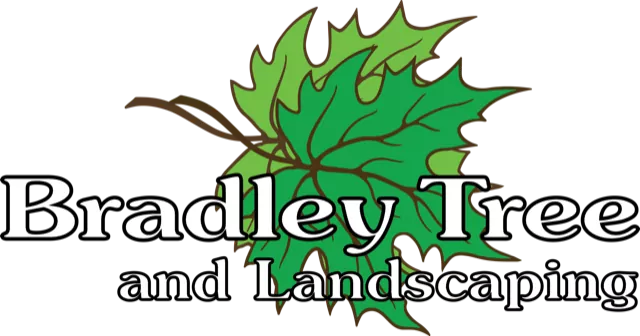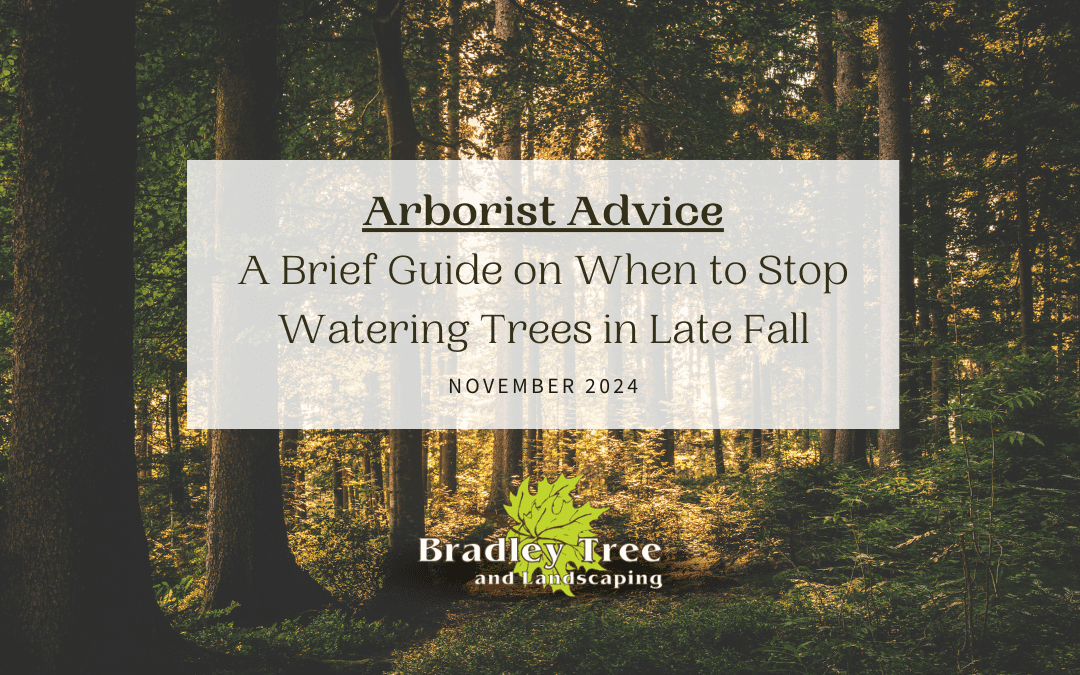Knowing when to stop watering your trees in late fall can make all the difference in their health through the winter. Tree hydration is crucial, but as we head into the colder months, it’s important to adjust your watering practices to help trees transition smoothly. Due to our region’s cold and fluctuating temperatures, late fall is a pivotal time for tree care in Buffalo. Our goal today is to make sure you have a good idea of when its an appropriate time to cease watering trees.
Watering Needs for Late Fall Tree Care
Why Tree Hydration is Different in Late Fall
As temperatures drop, trees begin preparing for dormancy, which means their energy needs change, and so does their water uptake. Unlike the warmer months when trees are actively growing, late fall signals the transition to rest. The process of water uptake in late fall is more about maintaining enough moisture to prevent dehydration without encouraging active growth, which can make trees vulnerable to the cold.
In Buffalo, trees need just the right amount of water to keep their roots hydrated without oversaturating the soil. This balance helps ensure the trees are ready to face winter’s challenges.
The Importance of Getting Timing Right
Getting the timing right for watering trees in late fall is crucial. If you stop too early, the roots may not have enough moisture to sustain them through the winter. On the other hand, overwatering can lead to root rot as temperatures continue to drop. The roots become unable to take in water properly once the ground starts to freeze, leading to waterlogged soil and potential disease. Maintaining the correct balance will help avoid both dehydration and root rot, keeping your trees in their best health.
Signs That It’s Time to Stop Watering Your Trees
Monitoring Soil Moisture Levels
One of the simplest ways to determine if your trees still need water is to check the soil moisture. Use a soil probe or even a screwdriver to gauge how damp the soil is around the base of your tree. Ideally, the soil should feel “moist but not wet”—meaning it’s damp enough to hold together but not saturated. If the soil is overly wet, it’s time to taper off the watering.
Temperature Clues to Watch For in Buffalo
Buffalo’s late fall temperatures can be a good guide for adjusting your tree watering schedule. Once temperatures are consistently around or below 40°F, it’s a sign that you should start tapering off your watering. The cooler conditions mean that the trees’ water needs decrease significantly as they shift to dormancy.
Leaf Changes as a Natural Indicator
Another way to know when to reduce watering is by observing the leaves on your trees. As leaves start changing color and falling off, it’s a natural signal that the trees are preparing for dormancy and no longer need as much water. Pay attention to how different species behave—some trees shed earlier than others, so adjust your watering practices accordingly.
How to Properly Taper Off Watering in Late Fall
Gradual Reduction vs. Abrupt Stop
It’s best to gradually reduce watering rather than stopping abruptly. Gradual reduction helps the trees adjust without sudden changes that could stress them out. In late fall, start by watering less frequently and reduce the amount each time. By the time temperatures consistently stay low, your trees will be ready for winter with minimal watering needs.
Avoiding Overwatering to Prevent Root Rot
Excessive moisture in the soil can be detrimental as temperatures drop. Root rot is a common consequence of overwatering in late fall, as the roots cannot effectively absorb water when the ground becomes cold and soggy. To prevent root rot, make sure you are only watering when the soil feels dry several inches below the surface. Keeping an eye on how quickly the soil dries out can help you make the best decision for your trees.
Late Fall Tree Care Tips for Buffalo and WNY Residents
Before winter fully sets in, it’s wise to conduct a tree health check. Look for weak or vulnerable branches that could snap under the weight of heavy snow or ice. If you notice any dead or damaged branches, consider having them pruned by a professional. This kind of proactive care can prevent potential issues and keep your landscape safe through winter.
Common Mistakes to Avoid When Watering Trees in Late Fall
Overwatering Before the Ground Freezes
One of the biggest mistakes homeowners make is watering their trees with the same plan as the summer until the ground freezes. Overwatering can lead to oversaturated soil, resulting in root rot. To avoid this, start reducing your watering frequency as soon as temperatures begin to drop in late fall.
Neglecting to Adjust for Different Tree Species
Not all species have the same hydration needs for their late fall tree care. For example, oaks and maples often need less water as they prepare for dormancy, while newly planted or younger trees might still need some extra hydration. Understanding the needs of different species will help you make the right adjustments and keep your trees healthy through winter.
When to Call a Professional Arborist
Signs Your Trees Need Extra Attention
If you notice signs of poor drainage, weak branches, or if you’re unsure about your watering practices, it’s a good idea to call an ISA-certified arborist. Professional arborists can assess your trees’ health and offer recommendations to ensure they’re prepared for winter.
Local Expertise for Tree Care in Buffalo and WNY
Bradley Trees is proud to offer expert tree care services throughout WNY. Our team understands the unique challenges that trees face in our home, especially during the transition from fall to winter. If you’re uncertain about your tree care needs, contact us for a professional assessment.
The Bradley Trees Way
Properly timing when to stop watering your trees in late fall can be crucial for their health through winter. By understanding the signs, gradually tapering off watering, and taking steps to protect your trees, you can ensure they remain healthy and resilient. If you need help preparing your landscape for winter, don’t hesitate to schedule a late fall tree care check-up with Bradley Trees. We go to great heights to please you.
Don’t forget to stay up to date with your favorite Buffalo arborists by following us on our blog and on Facebook, Instagram, and YouTube! Reach out today with a phone call or by using our online contact form.

